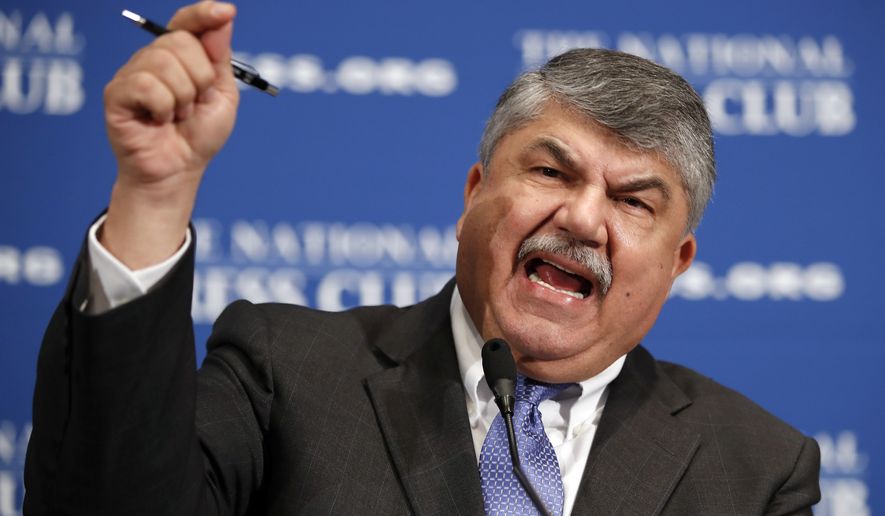The AFL-CIO is charting a new direction after the death last month of longtime union President Richard Trumka, but questions linger over whether the union can prevent further defections from its rank-and-file members, who increasingly vote Republican.
Early last month, the labor organization appointed Liz Shuler as its president. Ms. Shuler, a longtime labor figure and the group’s ambassador to younger union members, plans to use her tenure at the helm to expand the labor federation’s reach.
“This is a moment of tremendous opportunity,” Ms. Shuler said at a recent breakfast meeting with Washington journalists hosted by the Christian Science Monitor. “From tech to transportation, working people are speaking up and taking risks to create real change.”
Her solution to the divide between the union leadership’s alliance with an increasingly far-left Democratic Party and older rank-and-file members leaning toward the Republican Party is, in part, to court younger, more liberal workers.
Brad Bannon, a Democratic political strategist with close ties to the liberal movement and labor groups, said it is natural for unions to prioritize younger and more diverse workers because that is where the country’s demographics are headed.
“Unions have dramatically changed in the last 20 years, the leadership and the members are beginning to become younger and they’re less White than they used to be,” Mr. Bannon said. “I’m not sure I would define the older [union workers] as core members anymore. They’re becoming less and less a part of the core, and many are moving towards retirement anyway.”
SEE ALSO: History As It Happens: Here comes Labor Day. Where are the unions?
Ms. Shuler said her “big tent” movement would help the AFL-CIO make headway on efforts to overhaul labor laws, such as the Democrats’ Protecting the Right to Organize Act, or PRO Act, which would make it easier to unionize workplaces.
“We have the most pro-worker administration in history and a working majority in Congress,” she said. “So we must meet this moment by building a modern labor movement, a movement that is open and accessible and diverse, a movement that keeps pace with a changing economy … in every community with women and people of color at the center where every worker has the right to a good, sustainable union job.”
The AFL-CIO’s courting of younger workers, however, is expected to exacerbate fissures within the labor movement. Whether younger workers join unions or show up to vote will have dramatic repercussions for the labor movement and the Democratic Party.
Older union members, particularly those within the manufacturing sector, increasingly have backed Republicans for political office. The trend emerged in force with the rise of Donald Trump.
In 2020, according to exit polls, roughly 40% of union households backed the former president over Joseph R. Biden. Union voters, who once formed the backbone of the Democrats’ electoral coalition, were drawn by Mr. Trump’s stances on issues such as trade, jobs and immigration.
Mr. Trump’s share of the union electorate in 2020 was about equal to his share in 2016 despite Mr. Biden’s lifelong political pitch of being a “union man.”
SEE ALSO: U.S. hiring slows to just 235,000 jobs after 2 strong months
The Republican Party’s success with older, blue-collar union workers has put the Midwest and industrial Northeast into play in presidential elections. Before 2016, states such as Wisconsin, Michigan and Pennsylvania had not voted Republican at the presidential level since the Reagan era.
As unions court younger workers, they are expected to focus more on social justice issues than kitchen-table economic issues that have long defined the labor movement.
The shift is already evident. During her breakfast with reporters, Ms. Shuler discussed the need for unions to play a larger role in combating climate change, breaking down institutional racism and police reform. She acknowledged that these topics will widen the chasm between older and younger workers.
“Our job as the labor movement is to educate our members and bring people together and, as you said, it can be challenging when you have multiple generations in a workforce,” she said. “That’s what’s unique to the labor movement: We can actually be a place where workers have those conversations and have those debates, and they can be fierce at times.”
• Haris Alic can be reached at halic@washingtontimes.com.




Please read our comment policy before commenting.